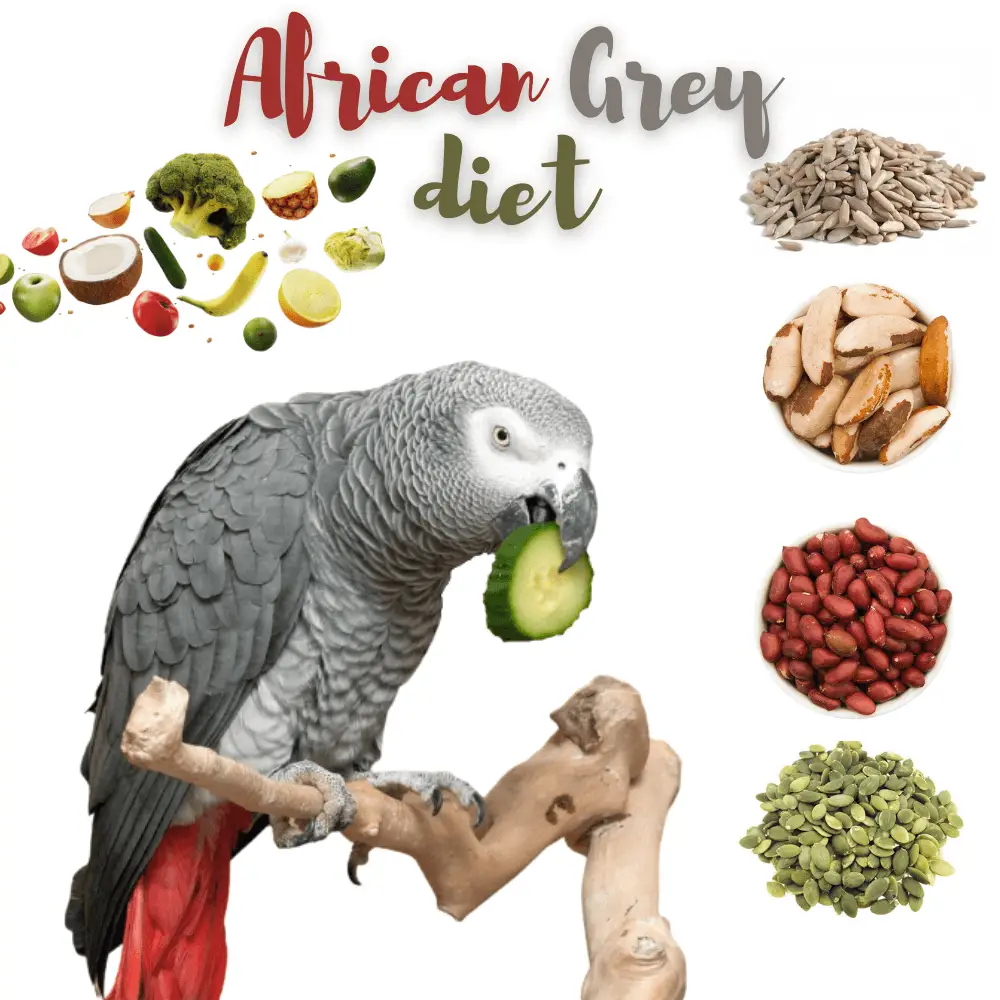African Grey Parrot, or Parrot Jaco, or congo parrot is characterized by impressive longevity, which can reach 80 years!
Native to the equatorial African forests, it is known for its pretty plumage in shades of gray and its formidable ability to speak.
Another name: Parrot Jaco
Scientific name: Psittacus erithacus
| Family | Psittacidae |
|---|---|
| Kind | Psittacus |
| Weight | From 400 gr to 550 gr |
| Cut | From 35 cm to 42 cm |
| African grey parrot lifespan | 40 to 80 years old The life expectancy of the Gray of Gabon is very long since it is at least 40 years, but it can reach 80 years. |
|---|
Physical features
The designation of Gray of Gabon, therefore, refers to its country of origin, but also to the characteristic color of its plumage. Gray appears in various shades depending on the areas of the body.
The color is much darker, even black, at the beak and the tips of the wings. It is lighter, tending to white, on the face and abdomen. The inside of the tail contrasts with everything else since it is red.
However, there are slight physical differences between the 2 subspecies of Gray from Gabon:
- The “ Congo parrot ” (Psittacus erithacus Erithacus Linnaeus) is larger, with lighter plumage and a black beak.
- The ” Timneh parrot ” is smaller, with darker plumage and the top of its beak is flesh-colored. Its tail is dark brown in color.
The Gray of Gabon has a wingspan of about 75 cm.
African Grey Parrot habitat

The Gray of Gabon lives mainly in the countries of central and west Africa: Gabo n, as its name suggests, but also Cameroon, Congo, Democratic Republic of Congo… Its natural habitat is found in forests equatorial to these countries.
History of the breed
The first description of the Gabonese Gray parrot was made in 1758 by the Swedish naturalist Carl von Linné.
Over the centuries, the high popularity of this bird has contributed to the decline of its numbers in the wild. The destruction of its natural habitat by deforestation has aggravated this trend.
This is why the species is listed in Annex I of the Convention on International Trade in Endangered Species of Wild Fauna and Flora (CITES). In other words, international trade in Gray from Gabon is prohibited.
African Grey Behavior
The Gray of Gabon is best known for his talents as a speaker. Not only is it capable of faithfully reproducing words and sounds, but it also does so in the right context.
From a shy nature, however, he becomes affectionate and expressive when allowed time to get used to his environment and his entourage.
He does not like loneliness and asks to be stimulated frequently by talking to him and playing with him.
Thanks to quality support and adapted education, it is possible to let him out of his cage after ten days so that he can explore the room or the house (close the exits ).
In its natural environment, the Gray Gabon parrot is extremely faithful, since it keeps the same partner throughout its life.
Until his sexual maturity, he evolves into large groups that can count hundreds of members. It is therefore a very sociable animal.
African Grey diet

The Gabonese Gray feeds mainly on seeds. It can therefore be given mixtures available in pet stores, but the bird may also sort and is thus exposed to deficiencies.
In all cases, it is necessary to regularly offer him fresh fruit and mineral stone to supplement his diet. He may also need vitamins to incorporate into his water from time to time. The veterinarian will be able to define his needs on this point.
African Grey Reproduction
In general, there are 3 to 4 eggs per laying in the female Gray parrot of Gabon. The incubation period then lasts between 28 and 30 days.
The parents feed their chicks for about 12 weeks, then the young birds begin to gain independence.
African grey health problems
On the health side, the Gray of Gabon requires special attention with regard to its respiratory tracts, which are reputed to be quite fragile.
The most frequent diseases observed in this species are, in fact, nasal congestion, even the formation of nasal mass, as well as infections of bacterial or fungal origin.
Gray Gabon can also suffer from hypocalcemia, circovirus (affecting the beak and feathers), as well as dilation of the proventriculus.
African grey parrot facts
The Gray of Gabon does not support loneliness or isolation, its cage is to be placed in a busy room, like the living room or the living room. The kitchen and the water rooms are to be avoided because of the fragility of the respiratory system.
Its cage must be sufficiently spacious. Inside, sturdy natural wooden toys and perches are left to occupy it.
A very intelligent animal, the Gray of Gabon is able to learn to unlock the simple latches, hence the need to opt for slightly more sophisticated opening devices.
Regarding its feeders, we will favor ceramic or stainless steel containers, which are more resistant than those made of plastic that will be liable to damage quickly.
In addition, the Gray of Gabon loves to bathe. It is therefore recommended to install it once a week in the sink or the bathtub so that it can wade freely but under supervision


1 thought on “African Grey Parrot”